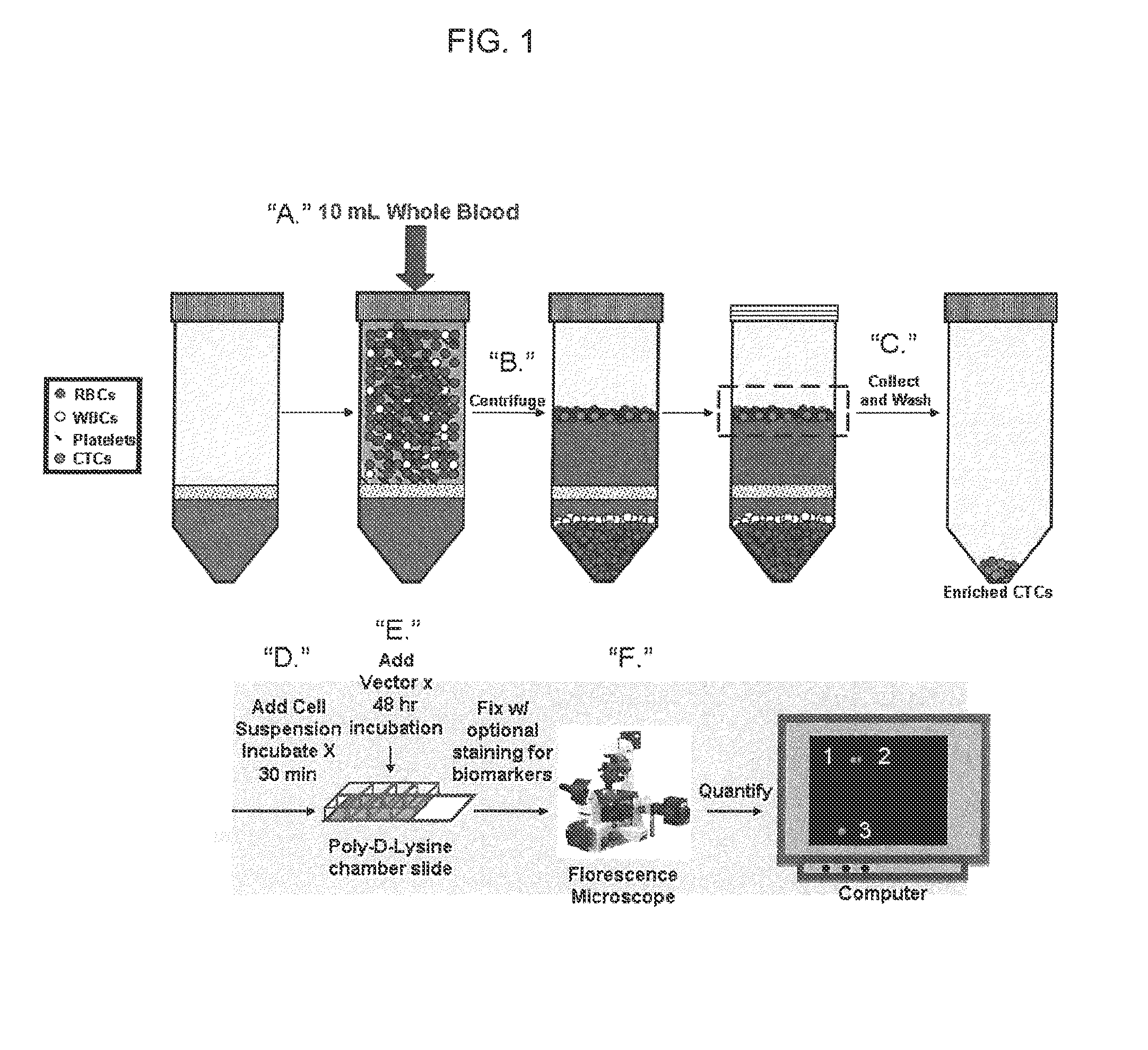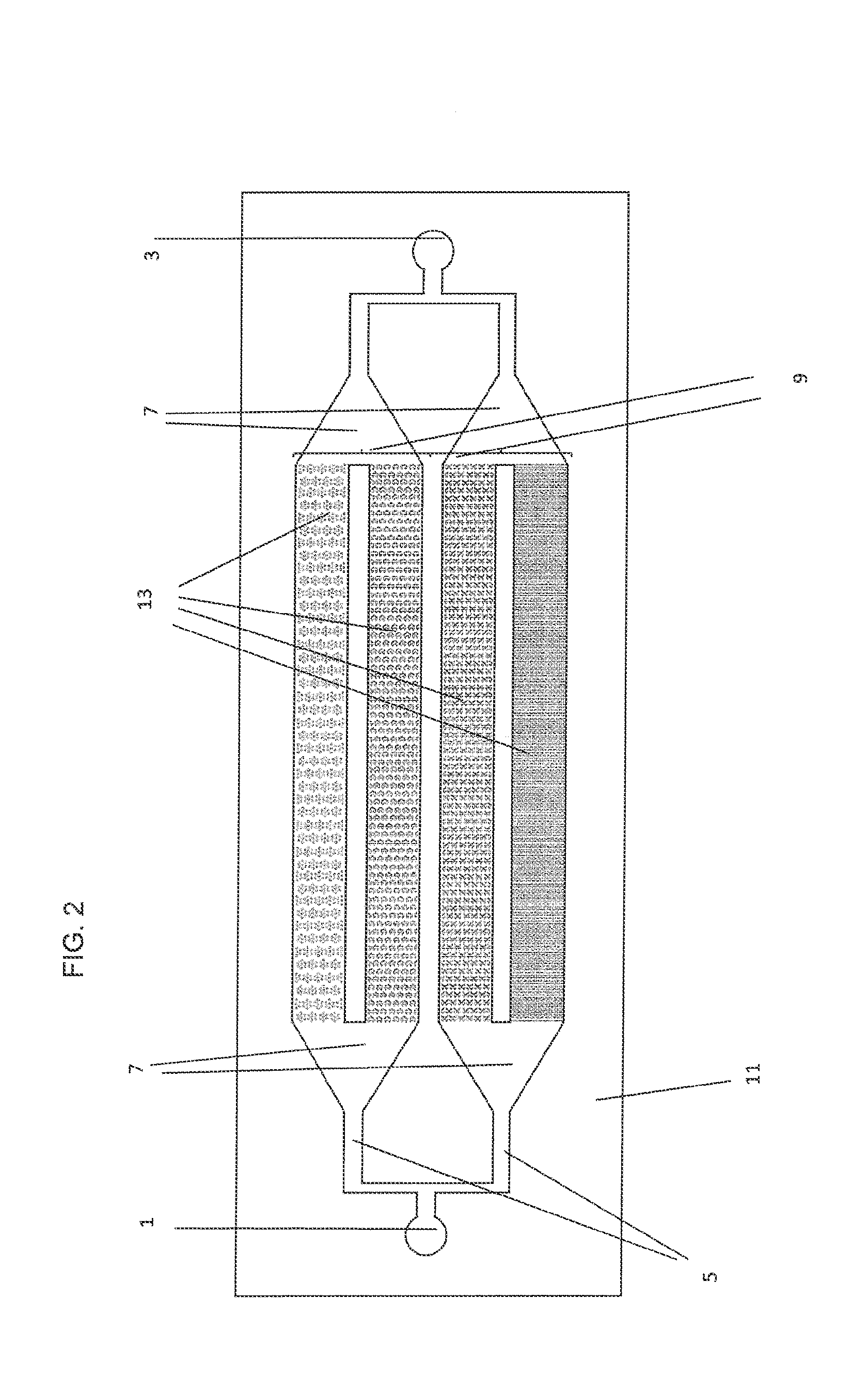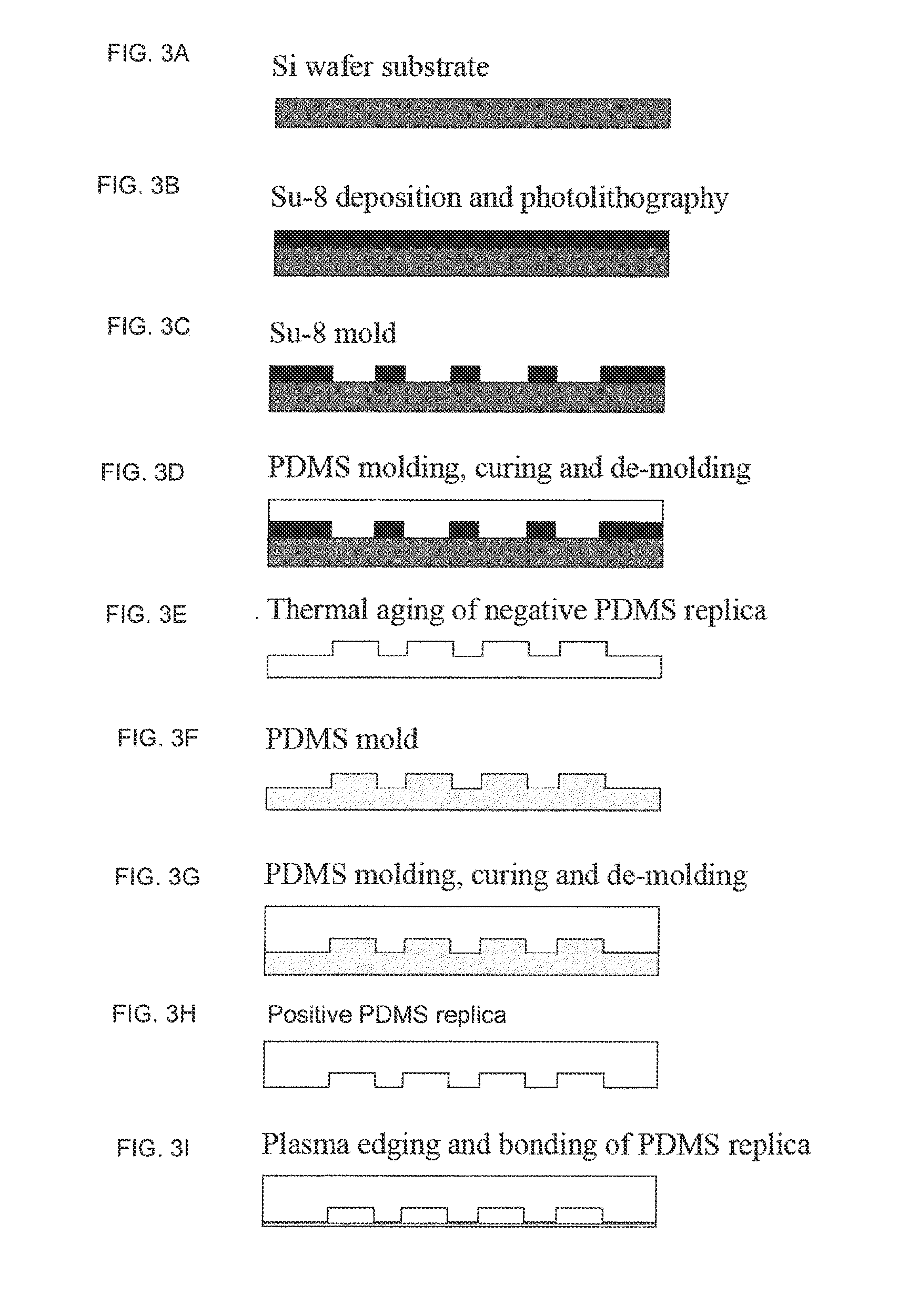Compositions, methods and microfluidics device for telomerase based in vitro diagnostic assays for detecting circulating tumor cells (CTC)
a technology of telomerase and applied in the field of telomerase based in vitro diagnostic assays for detecting circulating tumor cells, can solve the problems of difficult task, inability to generate high-quality samples, and low yield and purity, so as to facilitate sample transport, maximize capture, and the effect of reducing the number of tumors
- Summary
- Abstract
- Description
- Claims
- Application Information
AI Technical Summary
Benefits of technology
Problems solved by technology
Method used
Image
Examples
example 1
[0100]Example 1 describes preparation and process of patient-derived blood samples for CTC Analysis, i.e., CTC-enrichment which is optionally used in conjunction with the non-lytic adenoviral system for detection of circulating CTC.
[0101]A. Initial Sample Processing
[0102]After discarding initial two 6 mL tube collections to avoid contamination by epithelial stem cells, peripheral blood samples will be obtained in two 6-mL sodium heparin green top tubes and immediately placed on ice. Blood will be drawn until vacuum ends, with ideal total blood volume of at least 10 mL. Specimens will be processed within two hours of collection in compliance with CTC enrichment protocol manufacturer recommendations.
[0103]B. CTC Enrichment
[0104]Following combination of 10 mL sterile phosphate buffered saline in conical with blood collection, mixture will be chilled on ice for 15 minutes. Meticulous care will be exercised to introduce blood solution to OncoQuick tube, prior to centrifugation for 20 min...
example 2
A Telomerase-Based Single-Adenovirus Assay Detects Circulating Tumor Cells
[0180]Human glioblastoma-derived U251 cells were obtained from the American Type Culture Collection, ECACC catalogue number: 09063001 and suspended in Dulbecco's modified Eagle's medium (DMEM, Invitrogen, Carlsbad, Calif.) supplemented with 10% fetal bovine serum (FBS, Invitrogen, Carlsbad, Calif.) and 1.0% penicillin-streptomycin at 37° C. in an atmosphere of 5% CO2. Cells were seeded on 8 well Poly-d-lysine chamber slides at a pre-determined optimal density of 5×103 cells / well (enumeration provided via Nexcelom Biosciences' Cellometer in duplicate) just prior to viral infection. A non-lytic adenoviral particle according to the invention was constructed using conventional techniques, e.g., as described on http: / / www.med.upenn.edu / gtp / vectorcore.production.shtml. The source of adenoviral capsid and genomic sequences was human adenovirus 5 (Ad5).
[0181]The Human TERT promoter was synthesized based on the sequenc...
example 3
A Telomerase-Based Two Adenovirus Assay Detects Circulating
[0186]Tumor Cells
[0187]Human glioma cells U251 and suspended in a suitable as described in Example 2 above. Cells were seeded on 8 well Poly-d-lysine chamber slides at a pre-determined optimal density of 5×103 cells / well (enumeration provided via Nexcelom Biosciences' Cellometer in duplicate) just prior to viral infection.
[0188]A first non-lytic adenoviral particle according to the invention was constructed and is termed hTert.Cre. The source of adenoviral capsid and genomic sequences was human adenovirus 5 (Ad5). In the resulting construct, the wild-type E1 region (E1a and E1b) and the E3 region of the Ad5 are deleted. An exogenous expression cassette containing, from 5′ to 3′ the hTERT promoter, the Cre recombinases coding sequence, a polyA-Woodchuck hepatitis virus post-transcriptional regulation element (WPRE). This adenovirus does not contain any insert in the E3-deleted region, and with the exception of the E1-deletion...
PUM
| Property | Measurement | Unit |
|---|---|---|
| Temperature | aaaaa | aaaaa |
| Temperature | aaaaa | aaaaa |
| Length | aaaaa | aaaaa |
Abstract
Description
Claims
Application Information
 Login to View More
Login to View More - R&D
- Intellectual Property
- Life Sciences
- Materials
- Tech Scout
- Unparalleled Data Quality
- Higher Quality Content
- 60% Fewer Hallucinations
Browse by: Latest US Patents, China's latest patents, Technical Efficacy Thesaurus, Application Domain, Technology Topic, Popular Technical Reports.
© 2025 PatSnap. All rights reserved.Legal|Privacy policy|Modern Slavery Act Transparency Statement|Sitemap|About US| Contact US: help@patsnap.com



